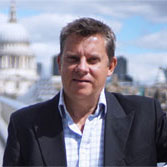A waterlogged statue shows General MacArthur permanently returning to the Philippines...

The statue marks where General Douglas MacArthur returned to liberate the Philippines on 20th October, 1944
General Douglas MacArthur was a man who liked to roll his trousers up and get stuck in, and this unusual statue of him striding ashore is at the MacArthur Landing Memorial National Park between Palo and Tacloban on Leyte Island in the Philippines.
The background to seven soldiers wading up the beach goes back to the Japanese invasion of the Philippines in 1942. MacArthur fled the country ignominiously for Australia and in the unlikely setting of Terowie train station in South Australia, he made the famous speech that included the line - 'I came through and I shall return'. A self-centred and vain man, when he seniors in Washington asked him to tweak the line to the less egotistical '...we shall return', he refused.

The famous photo of MacArthur wading up the beach, as snapped by Gaetano Faillace. Photo MacArthur Memorial Museum
His forceful personality became a symbol of resistance against the Japanese, and especially so for the people of the Philippines. Indeed, MacArthur pushed for the country's liberation as a priority - ahead of dislodging the Japanese from Formosa (now Taiwan) for example.
MacArthur won the argument and US troops landed on Leyte on the 20th of October 1944, while he watched on from the USS Nashville. The beachmaster was too busy to send a landing craft to the general, and so MacArthur opted to wade. This resulted in the most famous photo of the campaign. Taken by Gaetano Faillace, MacArthur's personal photographer, it also shows Philippine President Sergio Osmena (to MacArthur's right), Philippine Foreign Affairs Secretary Carlos P. Romulo (at his rear), and Richard K. Sutherland on his left.

Locals pose amongst the twice life size ensemble of statues
The Japanese counter attacked three days later, and what followed was the largest nval battle of the war - in which a combined Australian and American force thumped the Imperial Japanese Navy so badly that the Japanese navy largely remained in thier home port bases for the rest of the war.
MacAurthur was promoted to the rank of five star general of the US Army in December; one of only four people to achieve the rank in the Second World War. He then lead the invasion of Luzon and the Battle of Manila, and would have been key in the invasion of Japan had not the country capitulated after the dropping of atomic bombs on Hiroshima and Nagasaki in August 1945.
.

A spot of maintenance at the Landing Memorial
MacArthur ruled Japan after its surrender through the conduit of Emperor Hirohito from 1945-1948, and saught to protect the emperor from subsequent war crimes prosecution, despite MacArthur enforcing sentences on around 4,000 other Japanese citizens. MacArthur enacted land reform and encouraged trades union membership, in an attempt to strengthen Japan as a bulwark against the spread of Communism.
After the North Korean invasion of the south, MacArthur was appointed Commander-in-Chief of UN forces, and devised the Incheon landings, an amphibious surprise assualt that took place over four days in September 1950. It established UN forces deep into what before it was North Korean territory.

The Japanese didn't see the back of MacAurthur until he left Tokyo on 11th April 1951
Despite flying over the area himself to check that the Chinese Army wasn't building up in the vicinity, in fact they were, and attacked the UN/US forces in November. Within weeks the US?UN forces were pushed out of North Korea, and Soeul fell in January 1951. MacArthur was caught by intercepted communications of wanting to attack Chinese territory as a means of freeing the Korean peninsula, but this was a step too far for President Truman, who relieved MacArthur of his command on the 10th of April 1951.
He flew to Washington D.C. and addressed a joint session of Congress, drawing some 50 standing ovations. He went on a nationwide speaking tour, returned to the Philippines in 1961 to receive its Legion of Honour from its president, and then spent his final years with his wife in a penthouse suite in New York's Waldorf Astoria. He died on the 5th of Paril 1964, and was laid to rest inside the rotunda of the Douglas MacArthur Memorial, the former city hall of Norfolk, Virginia.
One more thing...MacArthur is commemorated in the USA with schools, bridges, barracks, tunnels, and 'Long Island MacArthur Airport' named after him. And MacArthur Park in Los Angleles was renamed in his honour too, and with a statue/memorial to him. There are more conventional statues of him; including outside the MacArthur Memorial museum in Norfolk, Virginia; and at the US Military Academy at West Point. The Philippines even has two settlements named after him, and another statue where the Luzon landings took place. South Korea has a statue at the Jayu Freedom Park in Incheon; Japan has one at the Atsugi Naval Air Station, and Indonesia's Zumzum Island is commonly known as MacArthur Island, owing to the general spending time there in the war.

Not quite a sailor's corn pipe, but an eccentric smoking device nonetheless. Photo MacArthur Memorial museum
The Missouri Meerschaum Company is based in Washington, Missouri - known rather grandiosely as the 'Corn Pipe Capital of the World', and sells a 'MacArthur Classic Corn Cob Pipe' for USD$13.59. The deep bowl and long step gives a 'cool smoking experience' apparently.
One more thing...another example of a partly submerged statue was London's 'RisingTide' by UK-born Jason deCaires Taylor. Famous for statues that are entirely submerged, including the Molinere Underwater Sculpture Park of the coast of Greneda, Taylor unveiled a sculpural ensemble as part of the 2015 Totally Thames Festival. The four horses and 'riders' were only completely visible for a couple of hours each day, at low tide, when in fact it was possible to walk around them on the exposed pebbly river bed.

Jason deCaires Taylor's Rising Tide near to low tide in 2015. Photo Maureen Barlin/Flickr
Hamburg has its 'Mann auf Boje' too, which appears to stand serenly on a buoy in the River Elbe. It was unveiled in 1993 and is a work by German-born Stephan Balkenhol, who often uses wood to carve human figures. The perfect place to see it from is either on a river cruise, or from the splendid Strandperle beach bar/restaurant. Read more on MyBathroomWall.

Balkenhol took part in the 1992 Doubletake programme in collaboration with London's Hayward Gallery, which involved placing his Figure On A Buoy on the River Thames between Hungerford and Waterloo bridges. The figure drew unexpected reaction from onlookers, some of whom contacted the emergency services. This culminated in a bloke leaping off a passing river cruise in order to enact a 'rescue', who perhaps unsurprisingly had then to be himself saved, after which the work was removed ahead of time.
 |
Fitting Leyte into a holiday: in truth the island of Leyte is a marginal destination for tourists, who head for the beaches of Borocay and Palawan, the rice terraces of Luzon, and the chocolate hills of Bohol. Yet a few hardy surfers and military history buffs do come here for the excellent waves and WWII legacy. Nearby Guiuan for example, was once home to the largest petrol boat base in the world. The region was devastated in the 2013 Typhoon Haiyan. |
 |
Getting there: the Memorial Park is seven kilometres from Tacloban City Airport, and easily visible if you happen to be sitting on the left hand side of the plane on landing (when the wind is coming from the north). The airport handled just over a million passengers in 2016, and has flights to Manila with Cebu Pacific, Philippine Airlines and Philippine Air Asia; to Cebu with Cebu Pacific, and to Davao with Cebu Pacific. |
 |
When to visit: the high season here is the dry season, which runs from November to April. The wet season is May to October, but the rain tends to be in the form of short short showers. Typhoons are threat to the country, especially between August and January. Typhoon Haiyan struck the Philippines in November 2013 and caused huge damage and considerable loss of life in Tacloban and Leyte Island. The airport was destroyed, and to commemorate the Typhoon and its aftermath, Pope Francis visited the area in 2015 and held an open air mass on the runway which drew a crowd of half a million. |
 |
More info: see Philippine Tourism |
 |
Visa and safety: always check your government's travel advice before booking, and ensure that your travel insurance is valid in this part of the country. See the British Foreign and Commonwealth Office travel advice. |





